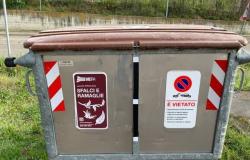A study on developments in the research of therapies and biomarkers for hepatic steatosis, which involved scientists from the University of Bari, has been published in the prestigious international journal ‘Nature Metabolism’. The Pre-clinical Work Package of the project was coordinated by Professor Antonio Vidal-Puig (University of Cambridge), Doctor Perfield (Eli Lilly Farmaceutici) and Professor Michele Vacca, of Internal Medicine, ‘Cesare Frugoni’ University Internal Medicine Section of the Polyclinic of Bari.
The focus of the European Innovative Medicine Initiative 2 LITMUS project, funded by the European Union and the European Association of Pharma Industries with a total budget of 47 million euros, aimed at the identification of non-invasive biomarkers for hepatic steatosis associated with metabolic dysfunction ( MASLD), a liver disease associated with obesity, metabolic syndrome and diabetes, and which increases the mortality of these pathologies as it can cause liver cirrhosis, increased cardiovascular risk and tumors (especially those of the liver).
MASLD currently does not have an approved pharmacological treatment in Italy, and the treatment is mainly based on the revision of lifestyles and the therapy of associated diseases such as diabetes. This is due to the complexity of the disease (which is only partially understood), but also to the lack of systematically validated pre-clinical models to study the mechanisms of the disease and test potential pharmacological therapies. This considerably limits the ability to translate basic science information into effective therapeutic approaches for patients.
In an epic effort to synthesize the evidence currently available, the research group coordinated by Professor Vacca, which includes several international academic institutions (mainly European) and various pharmaceutical multinationals committed to finding a cure for MASLD, performed an analytical screening of the data clinical, histological and genomics of 3 cohorts with hepatic steatosis (English, European, and American) comparing this information to the 40 preclinical mouse models of MASLD among those most used in the literature, in order to identify which models are most accurate in replicating the pathology human, highlighting its pros and cons, and providing useful information on how to improve the models currently available. This study has allowed us to reach an international consensus on the pre-clinical models of MASLD that have the greatest possibility of translation into humans and will accelerate research aimed at identifying therapies and biomarkers for hepatic steatosis.
The research team of Professor Michele Vacca, thanks to ministerial funding (PNRR, PRIN PNRR) and the Italian Cancer Association (AIRC) conducts clinical and translational research at the University of Bari in the field of hepatic steatosis and liver cancer (hepatocarcinoma ). The teacher is also Uniba’s contact person for an International Cooperation Agreement with the prestigious Roger Williams Institute of Hepatology (London), which has made it possible to establish a multinational consortium laboratory with the Bari university for the study of these research topics. The London laboratory periodically hosts Uniba students and doctoral candidates for training periods abroad (for example through the ‘Global Thesis’ programme).
At the ‘Cesare Frugoni’ University Internal Medicine Section of the Bari Polyclinic, Professor Vacca and his clinical team (which includes Doctors in Specialized Uniba Training), performs outpatient and day service activities for the clinical classification and treatment of fatty liver disease and its complications.



